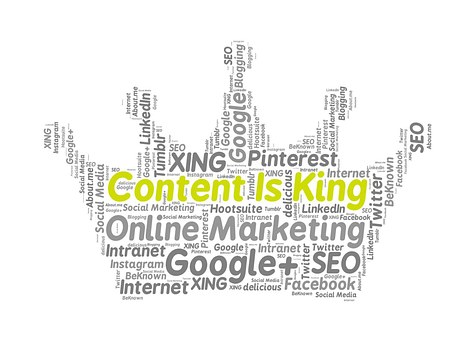What’s the big Deal About Audience in Content Writing and Copywriting?
 One thing I’ll never tire of talking about for marketing content writing and copywriting is target audience. It is an immensely important component of any article or blog post or press release or case study or sales page. It’s also a consideration very often neglected by both content writers and buyers.
One thing I’ll never tire of talking about for marketing content writing and copywriting is target audience. It is an immensely important component of any article or blog post or press release or case study or sales page. It’s also a consideration very often neglected by both content writers and buyers.
Here’s an exercise I used to use with my Comp students. I would give them the two paragraphs below – with almost the same information conveyed, but aimed at very different audiences – and then ask them to delineate the intended audience for each paragraph. When the realization finally set in, they were usually pretty amazed tailoring a piece of writing for a specific audience could make such a huge difference.
Here are the paragraphs:
Paragraph 1: This elegant two-story house exudes cozy class from every room and appointment. From the inviting glow of the mahogany woodwork to the happy sheen of the antique light fixtures, everything in this entertainer’s dream extends a tasteful welcome to all who enter. The kitchen and living room are not so commodious that they do not conduce to conviviality and conversation. The screened-in front porch and the delightfully shaded patio, on the other hand, are expansive enough to accommodate all your summertime social activities. And the guestrooms—what could be more appealing to the tired traveler than these cozy, carpeted upstairs bedrooms? So if you want an inviting yet spacious house that fits your active social life, come see this historical gem at 555 West Mendacity Street.
Paragraph 2: Here is a solid, energy-efficient, two-story house built with the materials and craftsmanship that you will not find in the newer houses. You will not find any thinly milled base molding and ¾” cove in this house; rather, it has full 1×6 base boards and 3” cove molding of fine seasoned mahogany. And there are no cheap-looking modern light fixtures, but solid antique fixtures instead. You will be able to keep your kitchen and living room comfortable year round—and at little cost—because the ceilings have been lowered to seven feet. In addition, the large screened-in front porch and the shrubbed and roofed patio will help keep your utility bills low by blocking the wind in winter and the sun in summer. Finally, the attic has been partitioned to make two insulated and carpeted bedrooms—just right for kids or in-laws. Come see this sensible solution to your housing woes at 555 West Mendacity Street.
So we’d first talk about the audience for Paragraph 1, and my students usually pegged them pretty accurately. Something like this: fairly young, probably late twenties or early thirties; well educated, with maybe graduate degrees; working in business or possibly as lawyers; drive high-end, show-off cars, maybe Lexus SUV; could be married, but probably not; like to entertain; drink expensive wines; absolutely no children.
After this, it was on to Paragraph 2, whose audience was delineated as follows: they have children, maybe three or four; they are older, late thirties or early forties; the wife probably stays home; the husband works construction; they are either teetotalers or the husband drinks a lot, Budweiser and Jim Beam; the mother-in-law might live with them; the husband drives a truck and the wife a battered station wagon; and so on.
See how it works? The information in the two paragraphs isn’t really all that different, but the paragraphs are: emphases, diction, sentence structure, lots of things. So whether you’re a content provider or buyer, give your target audience a lot of thought. It matters.

 I taught Freshman Composition for a bunch of years. During those years, I spent countless hours hammering away at trying to impress on my students the importance of audience and purpose as the two foremost considerations before ever setting pen to paper or finger to keyboard. We are, of course, talking about content writing here (website articles, blog posts, press releases, and so on), but writing is writing – and the fundamentals never change.
I taught Freshman Composition for a bunch of years. During those years, I spent countless hours hammering away at trying to impress on my students the importance of audience and purpose as the two foremost considerations before ever setting pen to paper or finger to keyboard. We are, of course, talking about content writing here (website articles, blog posts, press releases, and so on), but writing is writing – and the fundamentals never change.